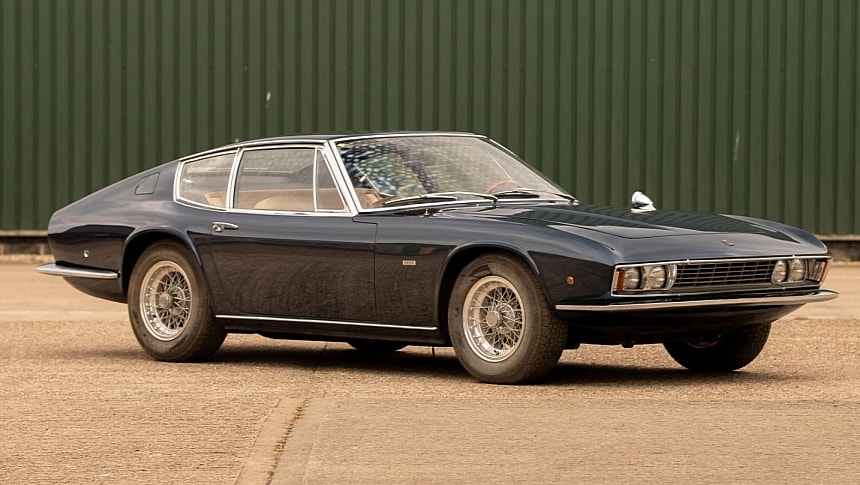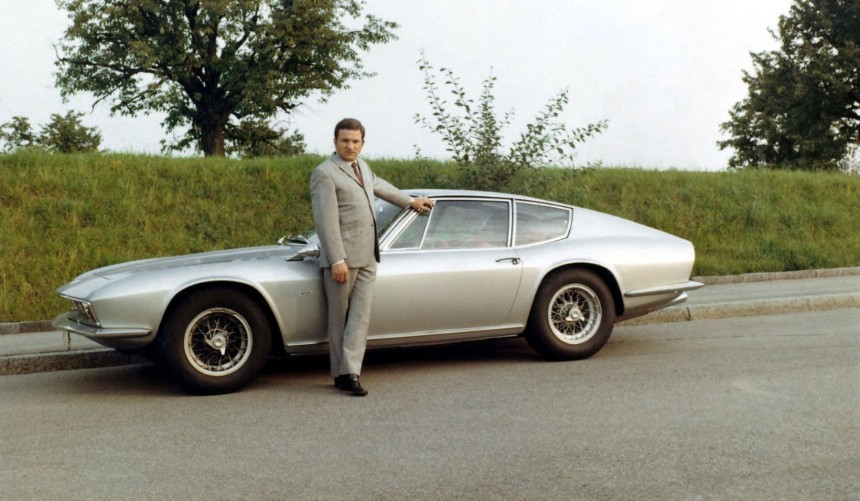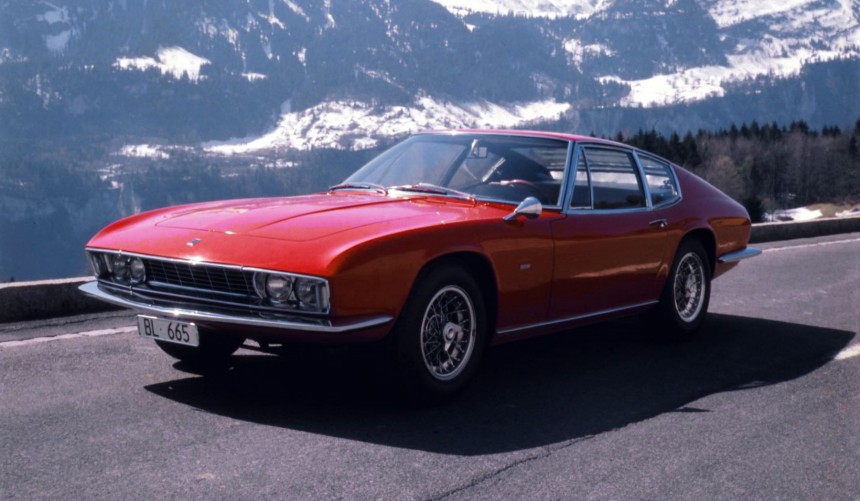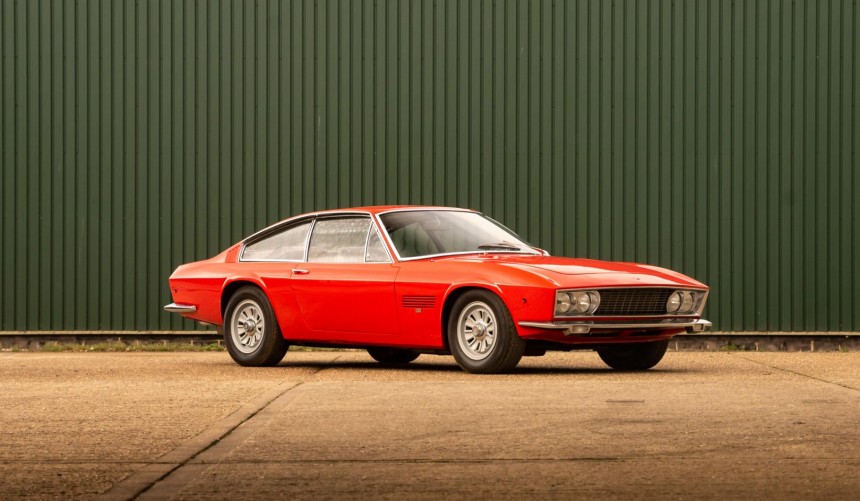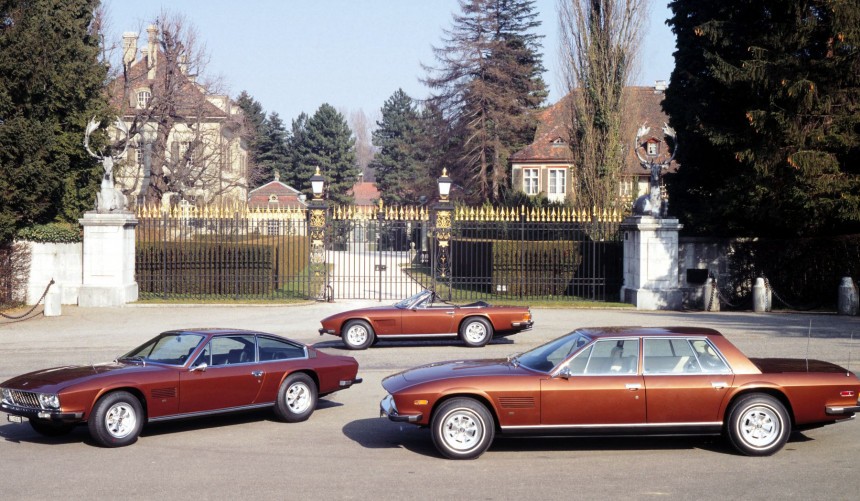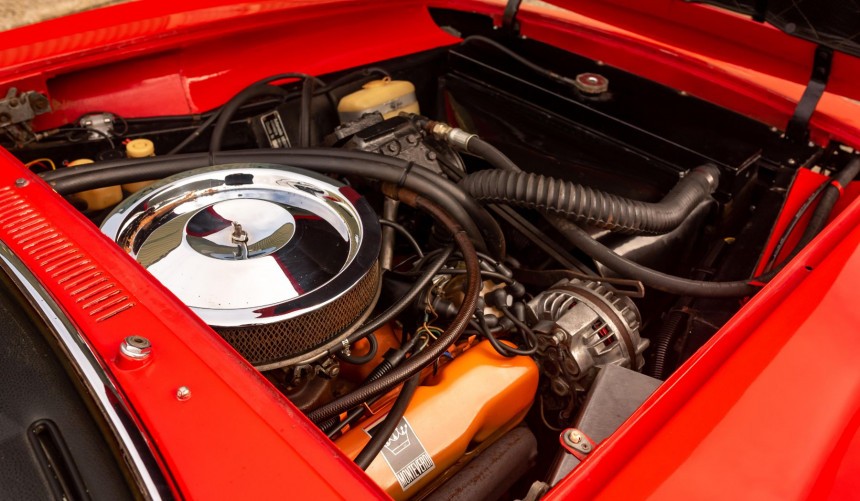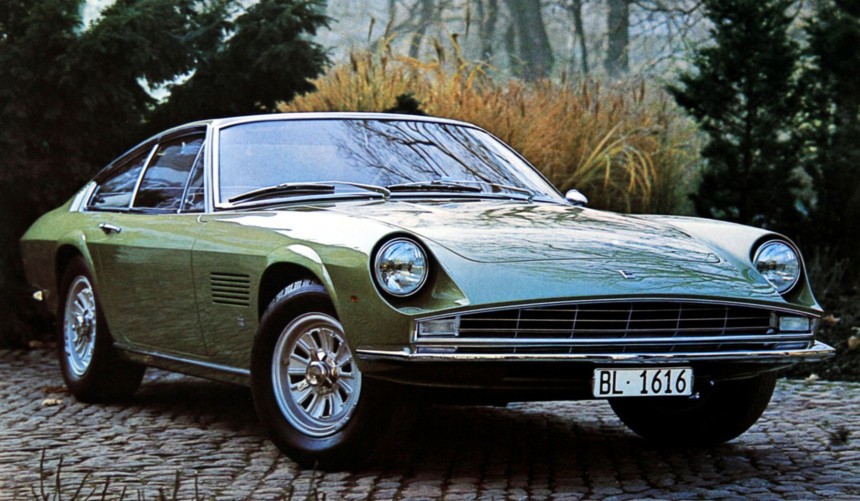One of the most underrated grand tourers of the 1970s, the Swiss-made, Italian-Bodied Monteverdi High Speed used a series of American V8s to persuade wealthy enthusiasts to choose it over a Ferrari.
A little over a decade after it developed its first road car, Ferrari's models were considered by many the ultimate enthusiast's car.
Naturally, that made them the most sought-after cars in the world, particularly by those enthusiasts who could afford one.
Nevertheless, some knowledgeable idealists thought Ferraris were overrated and started building their own cars, attempting to deliver what they saw as superior alternatives.
Unquestionably, the most famous example was Ferruccio Lamborghini, a designer, engineer, and successful industrial magnate who went from developing tractors to building impressive grand tourers because he was dissatisfied with what the Ferraris of the era had to offer.
Apart from Lamborghini, Ferrari was why another successful businessman decided to develop his own GT: the forgotten and grossly underrated Monteverdi High Speed.
His name was Peter Monteverdi, and long before deciding to build his own luxury grand tourer, he was an aspiring race driver who flirted with the world of Formula 1, where he only got to compete in a single Grand Prix.
Born in Switzerland, Monteverdi eventually inherited his father's auto repair shop, where he built a series of small Fiat-based sports cars, most notably the Monteverdi Special.
At the same time, he improved the repair shop, which became more successful, and by the late 1950s, he became the official Swiss importer of Ferrari (among other brands).
The partnership with the famed Italian carmaker lasted until 1963 when Monteverdi, a man who was allegedly very difficult to get along with, had a personal disagreement with Enzo Ferrari over a large order of cars.
With the collaboration officially over and a lawsuit ensuing, the Swiss were determined to get back at Enzo, so he began developing a luxury grand tourer aimed directly at Ferrari's successful models.
After years of design and development, Monteverdi finally unveiled his GT at the 1967 International Motor Show in Germany.
Dubbed High Speed 375 S, the two-seat coupe doned an elegant body handcrafted in Italy by leading Italian coachbuilder Frua.
The car was met with positive reviews by the press, which praised the exterior design, the lavish interior that oozed a level of luxury normally associated with British GTs, and the surprisingly crisp handling.
Encouraged by the positive feedback, the Swiss carmaker commenced a limited production run and developed a long-wheelbase, 2+2-seat prototype called High Speed 375 L.
Monteverdi wanted to step up production, but Frua, who manufactured the bodies largely by hand, didn't have the means to keep up with the carmaker's demand.
Unable to find a solution, Monteverdi and Frua ended their collaboration in 1968. Until that point, around ten 375 S two-seaters and one 375 L four-seat prototype were built.
The Swiss company turned to Carrozzeria Fissore for body manufacturing and switched focus to the four-seat 375 L, as the more practical version had more market potential.
The Fissore-bodied High Speed 375 L inherited much of the original design, with only minor aesthetical changes. This model became the most popular iteration of the High Speed, with around 66 examples leaving the factory from 1969 to 1976.
Apart from the 375 L, Monteverdi continued offering the two-seat version, albeit with an extensive facelift.
Though its body was manufactured by Fissore, the 375 S closely resembled and shared components with the Italian-bodied, British-built AC 428 (aka the AC Frua). Only six examples of this version were ever buit.
In addition, the collaboration with Carrozzeria Fissore gave birth to a couple of two-seat convertible High Speeds (375 C) and a four-door GT-style sedan ( 375/4) produced in approximately 28 copies.
Unlike Ferruccio Lamborghini, Peter Monteverdi didn't have the means to develop an engine from scratch for the High Speed.
To solve the powertrain issue, he borrowed the recipe used by other small luxury GT manufacturers like Jensen, De Tomaso, or Iso and sourced cheap, reliable, and powerful V8s from across the Pacific after striking a deal with Chrysler.
Throughout the High Speed's production run, most cars were powered by the high-output, four-barrel/mild-cam version of Chrysler's 440-ci (7.2-liter) big-block V8.
Also known in the US as the 440 Magnum in Dodge models, 440 Super Commando in Plymouths, or 440 TNT in Chryslers, the engine was available with either a three-speed automatic or a five-speed manual.
Improved with only a larger oil pan and an additional oil cooler, the engine was initially rated at 375 hp (gross) and 480 lb-ft (651 Nm) of torque, which helped the High Speed live up to its name.
However, as American manufacturers were forced to limit output, the Swiss GT's performance figures also dropped. By the end of the production run a few High Speeds were equipped with 440s chocked to 195 hp (net).
Apart from the 440, potential owners could request a 426 HEMI via special order. However, since the company's records were lost, we don't know for sure how many (or if any) production cars left the factory with the mighty Elephant engine under their hoods.
Though it never reached the same level of popularity as any contemporary Ferrari, the Monteverdi High Speed series was praised for its excellent built quality.
Furthermore, despite the rather simple spaceframe chassis with an independent suspension setup in the front and a De Dion rear configuration, the High Speed, with its excellent Koni adjustable shocks, delivered a surprisingly good driving experience.
Coupled with the power provided by the 440 Magnum, particularly in pre-1971 examples, the elegant Monteverdi was one of the most impressive grand tourers of its era.
Unfortunately, Monteverdi lacked the funds to promote and improve it as aggressively as he would've liked, so the series never became as popular as it could've been.
Today, the Monteverdi High Speed is largely forgotten, but for GT enthusiasts and sports car buffs alike, it deserves to be remembered.
For more on this fascinating car, we recommend the YouTube video below by Rare Cars.
Naturally, that made them the most sought-after cars in the world, particularly by those enthusiasts who could afford one.
Nevertheless, some knowledgeable idealists thought Ferraris were overrated and started building their own cars, attempting to deliver what they saw as superior alternatives.
Unquestionably, the most famous example was Ferruccio Lamborghini, a designer, engineer, and successful industrial magnate who went from developing tractors to building impressive grand tourers because he was dissatisfied with what the Ferraris of the era had to offer.
Apart from Lamborghini, Ferrari was why another successful businessman decided to develop his own GT: the forgotten and grossly underrated Monteverdi High Speed.
The brainchild of a man who was more temperamental than Enzo
Born in Switzerland, Monteverdi eventually inherited his father's auto repair shop, where he built a series of small Fiat-based sports cars, most notably the Monteverdi Special.
At the same time, he improved the repair shop, which became more successful, and by the late 1950s, he became the official Swiss importer of Ferrari (among other brands).
The partnership with the famed Italian carmaker lasted until 1963 when Monteverdi, a man who was allegedly very difficult to get along with, had a personal disagreement with Enzo Ferrari over a large order of cars.
With the collaboration officially over and a lawsuit ensuing, the Swiss were determined to get back at Enzo, so he began developing a luxury grand tourer aimed directly at Ferrari's successful models.
The first High Speed
Dubbed High Speed 375 S, the two-seat coupe doned an elegant body handcrafted in Italy by leading Italian coachbuilder Frua.
The car was met with positive reviews by the press, which praised the exterior design, the lavish interior that oozed a level of luxury normally associated with British GTs, and the surprisingly crisp handling.
Encouraged by the positive feedback, the Swiss carmaker commenced a limited production run and developed a long-wheelbase, 2+2-seat prototype called High Speed 375 L.
Monteverdi wanted to step up production, but Frua, who manufactured the bodies largely by hand, didn't have the means to keep up with the carmaker's demand.
The High Speed 375 L
The Swiss company turned to Carrozzeria Fissore for body manufacturing and switched focus to the four-seat 375 L, as the more practical version had more market potential.
The Fissore-bodied High Speed 375 L inherited much of the original design, with only minor aesthetical changes. This model became the most popular iteration of the High Speed, with around 66 examples leaving the factory from 1969 to 1976.
Other High Speed versions
Though its body was manufactured by Fissore, the 375 S closely resembled and shared components with the Italian-bodied, British-built AC 428 (aka the AC Frua). Only six examples of this version were ever buit.
In addition, the collaboration with Carrozzeria Fissore gave birth to a couple of two-seat convertible High Speeds (375 C) and a four-door GT-style sedan ( 375/4) produced in approximately 28 copies.
Powered by American V8s
To solve the powertrain issue, he borrowed the recipe used by other small luxury GT manufacturers like Jensen, De Tomaso, or Iso and sourced cheap, reliable, and powerful V8s from across the Pacific after striking a deal with Chrysler.
Throughout the High Speed's production run, most cars were powered by the high-output, four-barrel/mild-cam version of Chrysler's 440-ci (7.2-liter) big-block V8.
Also known in the US as the 440 Magnum in Dodge models, 440 Super Commando in Plymouths, or 440 TNT in Chryslers, the engine was available with either a three-speed automatic or a five-speed manual.
Improved with only a larger oil pan and an additional oil cooler, the engine was initially rated at 375 hp (gross) and 480 lb-ft (651 Nm) of torque, which helped the High Speed live up to its name.
However, as American manufacturers were forced to limit output, the Swiss GT's performance figures also dropped. By the end of the production run a few High Speeds were equipped with 440s chocked to 195 hp (net).
Apart from the 440, potential owners could request a 426 HEMI via special order. However, since the company's records were lost, we don't know for sure how many (or if any) production cars left the factory with the mighty Elephant engine under their hoods.
A surprisingly well-built GT
Furthermore, despite the rather simple spaceframe chassis with an independent suspension setup in the front and a De Dion rear configuration, the High Speed, with its excellent Koni adjustable shocks, delivered a surprisingly good driving experience.
Coupled with the power provided by the 440 Magnum, particularly in pre-1971 examples, the elegant Monteverdi was one of the most impressive grand tourers of its era.
Unfortunately, Monteverdi lacked the funds to promote and improve it as aggressively as he would've liked, so the series never became as popular as it could've been.
Today, the Monteverdi High Speed is largely forgotten, but for GT enthusiasts and sports car buffs alike, it deserves to be remembered.
For more on this fascinating car, we recommend the YouTube video below by Rare Cars.
